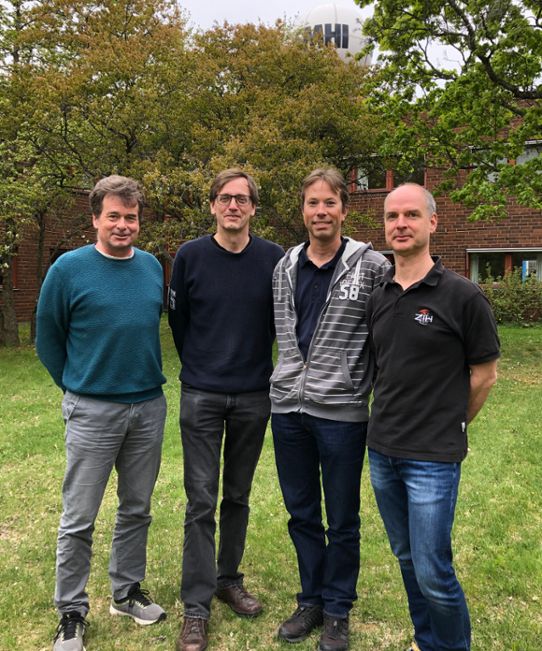For several years, a new version of the EC-Earth climate model has been in development at the Rossby Centre, SMHI’s climate modelling unit. Working as part of an international research network, the model has been developed so that it can be used to carry out new calculations of how the climate may change in the future.

Fundamental structural changes
The actual foundation of the model has evolved from being a connected model of the atmosphere and the sea into a model built up of various components that can be used in different combinations in different calculations. Together, they make up the EC-Earth model, a type that researchers call a climate system model. A climate system model can calculate how physical and biogeochemical processes in the climate system are affected as the climate changes, and how in turn these processes also affect climate change.
Within a climate model, the area to be studied is divided up into a number of squares. Researchers have now reduced the size of the squares in EC-Earth, thereby increasing the resolution from around 120 km to around 80 km in the atmosphere. A higher resolution means that the model can show greater detail. They have also developed the model to calculate more processes in the climate system that were previously described in a simplified manner.
“The new version of EC-Earth gives us a more competent model that does a good job of recreating the climate change we have seen to date,” says Klaus Wyser, a researcher at SMHI’s climate modelling unit, the Rossby Centre. “With this knowledge, we can now calculate how the climate may change in the future.”
Calculating vegetation
EC-Earth has been developed within an international consortium that was led by SMHI in recent years. In Sweden, SMHI has worked with the universities of Lund, Stockholm, Gothenburg and Uppsala. At Lund University, a dynamic vegetation model has been developed which is now part of EC-Earth.
“Vegetation reacts to climate changes and gives the climate feedback,” explains Klaus. “As vegetation changes, so too does the albedo, in other words the amount of radiation reflected by the surface. We previously had simplified descriptions of this process, but now the model calculates this itself.”
Developing processes for the Arctic
Temperatures are rising faster in the Arctic than anywhere else on the planet, affecting the ice extent. As the sea ice disappears, a greater exchange of heat occurs between the sea and the atmosphere. Torben Koenigk, a research leader at SMHI’s Rossby Centre, explains that the difficulty with the Arctic is how quickly climate change is happening there. Until now, many models have underestimated this trend.
“We have developed the model so that each calculation square can have five different ice thicknesses instead of just one. The model therefore now recreates a much more realistic annual cycle for the climate in the Arctic.”
The vertical mixing in the sea has also been developed in the model, allowing EC-Earth to show a better large-scale circulation.
The importance of supercomputers
One pre-condition for operating an advanced climate model like EC-Earth is that the supercomputers used to run the model have also become faster and more powerful.
“The models are now so complex that they require a sound structure and methods to handle the large amounts of data they create,” adds Uwe Fladrich, a scientific programmer at SMHI’s Rossby Centre. “At the same time, we also share all our calculations as open data. This ensures the maximum benefit for society, as many researchers around the world can use this data.”
SMHI will now use EC-Earth to carry out a number of climate calculations following a structure coordinated within CMIP6, an international climate modelling collaboration in which researchers are calculating how the climate is changing, comparing the results from different climate models and making their calculations available within a large-scale, open, international data archive for climate modelling. This data will be made openly available for research via the data node of the Earth System Grid Federation (ESGF), which SMHI operates together with the National Supercomputer Centre (NSC) at Linköping University.